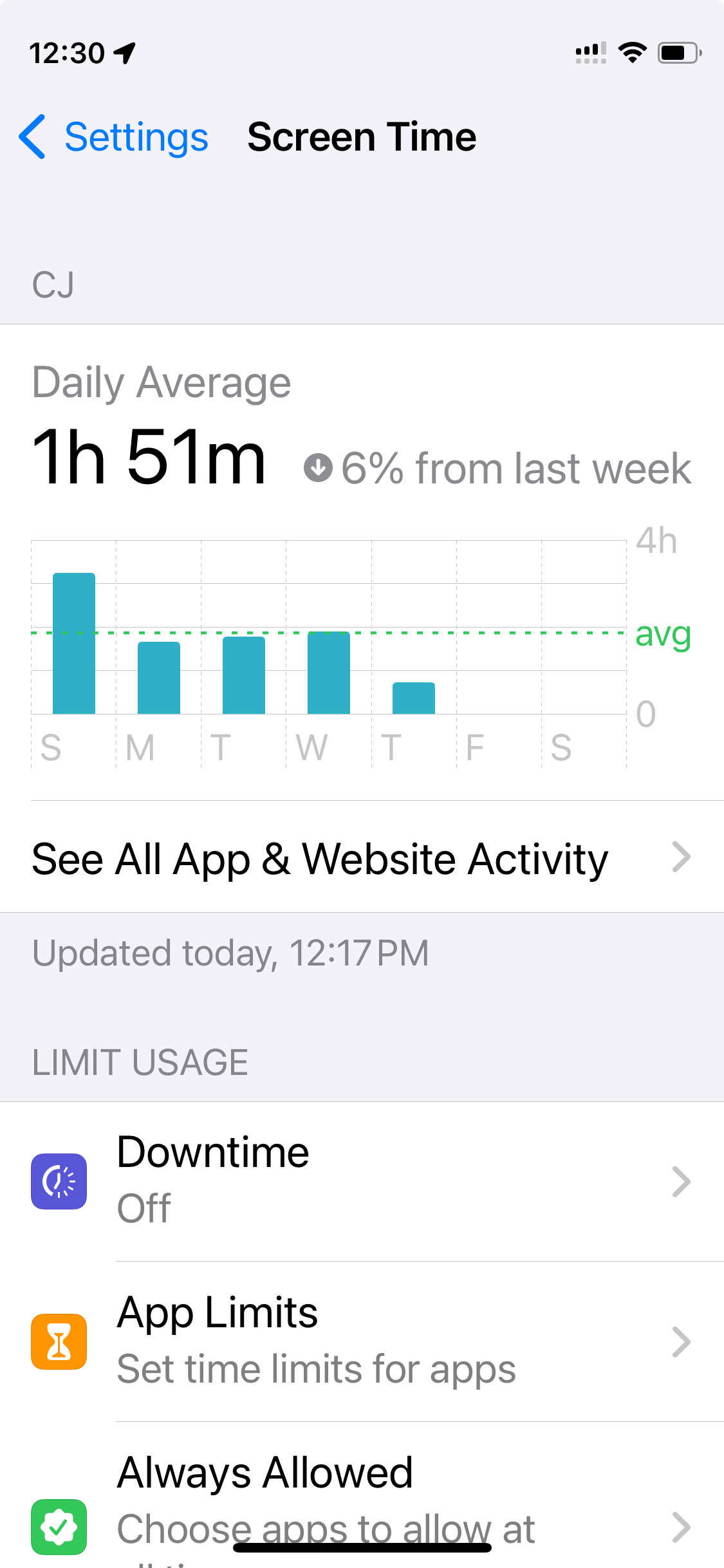- The Wellness Tree1480 Beltress St, Suite 5
Dunedin, FL 34698727-216-6929 Call for appointments & information
- Testimonials
I went to get acupressure because I was past my pregnacy due date, but after the appointment I felt like I was walking on air. I had a lot of energy, my pains were gone, and I realized I needed it more than I really knew. She is understanding and very professional. I would definitely recommend Dr. Graves.
-S.S
Dr. Carrie Johnson is what all physicians should be–knowledgeable, concerned, and caring. She listened and worked with me as an individual. She took me from a life of fear of exacerbating the already constant pain to a life where I can be physically active because the pain can be eliminated by her skilled treatment. Not only did she provide healing with accupuncture to relieve TMJ and radiating nerve pain, she also taught me two simple exercises that extend the effect
... Read more »I am a sr citizen and have been going to Dr. Carrie for a year and am hooked on acupuncture!! She helped me with losing weight and lowering my blood pressure. A great way to stay well and maybe someday all insurance carriers will see to it to cover acupuncture as a medical treatment.
I am a fitness freak: I like cross-country running,cycling, weight lifting, playing basketball and racquetball. But at a certain point I started having severe back pains, spasms and hamstring tightening which sidelined me for quite a while as I tried physical therapy but I did not get immediate relief I was looking for. Then I visited with Dr Carrie Johnson for initial visit and analysis of my condition, at first I was skeptical but Dr Carrie Johnson made me a believer of Acupuncture and Active release techniques. Thanks
... Read more »Let me start by saying I am a certified CrossFit trainer with multiple specialty certifications and I am also a USAW certified Sport Performance Coach. I have dealt with minor injuries before but nothing that forced me to consider some type of rehab or treatment plan. While training high volume or a competition I suffered a low back injury. After months of rest and self prescribed rehab I wasn’t getting back to the shape I wanted and my symptoms persisted.
... Read more » -
Latest Articles:
- • The Best Ways to Protect Your Skin from the Sun This Summer •
- • Savoring Summer with Recipes Using the Best Summer Ingredients •
- • Top 5 Best Staycation Ideas for Summer •
Carrie J. Graves
Reclaiming Time, Embracing Values: Navigating Our Digital Lives with Purpose
 In a world where the average American glances at their phone every few minutes, tallying up to an astonishing 3 hours and 30 minutes of screen time daily, our digital habits are silently sculpting our lives. With each pickup, swipe, and click, we’re not just passing the time; we’re shaping our day-to-day experiences and, inadvertently, our values. But how often do we pause to consider if the way we spend our time truly aligns with our personal values? Inspired by Jay Shetty’s transformative approach in “Think Like a Monk,” let’s create a path to mindful living, where every minute counts towards crafting a life filled with purpose, presence, and profound personal fulfillment.
In a world where the average American glances at their phone every few minutes, tallying up to an astonishing 3 hours and 30 minutes of screen time daily, our digital habits are silently sculpting our lives. With each pickup, swipe, and click, we’re not just passing the time; we’re shaping our day-to-day experiences and, inadvertently, our values. But how often do we pause to consider if the way we spend our time truly aligns with our personal values? Inspired by Jay Shetty’s transformative approach in “Think Like a Monk,” let’s create a path to mindful living, where every minute counts towards crafting a life filled with purpose, presence, and profound personal fulfillment.
Recent studies on screen time usage and phone interactions have revealed significant insights into our digital habits. In 2023, the average American spent approximately 7 hours and 4 minutes per day on screens, encompassing a range of devices, including phones, computers, and others. Specifically, daily phone usage averaged 3 hours and 30 (The Tech Report, 2023) and the average person picks up their phone 58 times per day.
Social media platforms, particularly TikTok, have substantially contributed to this screen time allocation. In the United States, TikTok was the most utilized app in 2023, with an average daily usage of 55.8 minutes. It also led globally as the most-used social media app, with users dedicating approximately 23.5 hours per month to it. YouTube and Facebook followed closely, with users spending 23.1 and 19.7 hours per month on these platforms, respectively (Windows Report, 2023).
A notable statistic is the frequency at which Americans check their smartphones—on average, every 4 minutes. Moreover, Pew Research data indicates that 31% of Americans are almost constantly online, with another 48% accessing the internet several times a day (Windows Report, 2023).
Time Management and Personal Values
In his book, “Think Like a Monk”, Jay Shetty emphasizes the importance of living a life aligned with one’s values. He suggests that to achieve this, one must first identify those values. Whether it’s family, education, or a particular hobby, recognizing these values is the first step toward mindful living. However, recognizing our values is only part of the equation; the other, often more challenging part, is aligning our time and actions with these values.
Conducting a Time Audit
A time audit involves tracking how you spend your time over a day or a week. This can be an eye-opening exercise, revealing how much of our time is spent on activities that do not contribute to our core values.
To conduct a time audit, you can use a simple notebook or a time-tracking app to record all your activities throughout the day. The key is to be honest and detailed, noting everything from when you wake up to when you go to bed.
Aligning Time with Values
Once you have a clear picture of where your time goes, the next step is to evaluate how well your activities align with your values. This might require some tough introspection. Finding a discrepancy between your values and how you spend your time indicates that some changes are needed.
This could mean:
Cutting down on activities that do not serve your values, like mindless scrolling on social media.
Introducing new habits or routines that better reflect your core values, such as dedicating time to family or personal development.
Addressing Misalignments
Identifying misalignments between your values and how you spend your time is crucial. It may reveal habits that are interfering with your goals, a need to re-evaluate your current life goals, or simply that you need to make the time for what truly matters. Addressing these misalignments often involves setting new priorities, making lifestyle changes, and sometimes, using tools to help manage distractions, like phone usage.
Tools and Tips for Reducing Screen Time
Given the significant impact of phone addiction on our time and attention, employing tools and strategies to manage this is essential. Apps like “Opal” can help by blocking access to distracting websites and apps, retraining our habits around phone use. Furthermore, most smartphones now come with built-in tools to monitor screen time usage, allowing users to set limits for certain apps or activities.
Commitments to Reduce Screen Time
- Making concrete commitments can further reduce screen time and align your daily life with your values. Simple commitments might include:
- No phones at meal times, commit to fostering relationships with those around you or focus on mindfully eating.
- Avoiding phone use in the first and last 30 minutes of your day to improve sleep and start your day more mindfully.
- Using moments like waiting in line or red lights to practice mindfulness or reflect on your day rather than checking your phone.
By consciously deciding where and how we spend our time, especially in relation to our phone usage, we can take significant strides towards living a life that is not only more purposeful but also more aligned with our personal values.
Reflecting on Jay Shetty’s advice, it’s clear that managing phone addiction and aligning our time with our values are not just about discipline; they’re about making intentional choices that foster a life filled with purpose and fulfillment. As we work towards these goals, let’s remember that every small change in how we manage our time and attention can lead to significant improvements in our overall quality of life.
To manage screen time and understand your digital habits better, both iPhone and Android devices offer built-in features that track screen time usage and the number of times the phone has been picked up. Here’s how you can find this information on both types of devices:
- Access Screen Time: Go to “Settings” and tap on “Screen Time.” If you haven’t already, you might need to turn on Screen Time by following the on-screen instructions.
- View Report: Once Screen Time is enabled, you can view your daily or weekly usage report, which shows how much time you’ve spent on your device and specific apps.
- Pickups: The Screen Time report also includes information on the number of times you’ve picked up your iPhone each day and which apps you used first after picking up your device.
- Set App Limits: You can set daily limits for app categories you want to manage closely to help reduce your screen time.
- Downtime: Schedule downtime for yourself, during which only phone calls and apps that you choose to allow will be available.
For more detailed instructions and tips on using Screen Time on an iPhone, you can visit Apple’s official support page at: https://support.apple.com/en-us/HT208982.
On an Android Device:
- Digital Wellbeing & Parental Controls: Open “Settings” and look for “Digital Wellbeing & Parental Controls.” Depending on your device’s manufacturer and Android version, this feature might be located under different names or settings menus.
- Dashboard: Within Digital Wellbeing, you’ll find a dashboard that displays your screen time, the number of notifications you’ve received, and how many times you’ve unlocked your device.
- App Timers: Similar to iPhone’s App Limits, you can set timers for individual apps to help manage your usage.
- Focus Mode: This feature allows you to pause distracting apps to help you focus temporarily.
- Bedtime Mode: Customize your device’s settings to help you wind down at night, such as turning the screen to grayscale or silencing notifications.
For more specific guidance tailored to your Android device’s model and operating system version, you can visit Google’s Digital Wellbeing guide at: https://wellbeing.google/.
By regularly checking your screen time statistics and making conscious adjustments, you can take significant steps towards managing your digital well-being and ensuring that your technology use aligns with your personal values and lifestyle goals.
Let’s remember that our time is the canvas of our lives, and every moment we spend glued to screens is a stroke of color on that canvas. The statistics are clear: with an average of 3 hours and 30 minutes daily spent on phones and countless pickups, our digital habits are more than just routines; they are reflections of what we prioritize. But armed with awareness and the transformative advice from Jay Shetty in “Think Like a Monk,” we have the power to audit our time and realign our actions with our deepest values.
Let this not be an end but a beginning—a starting point to a more mindful, purposeful existence where each second counts not in likes and shares, but in meaningful connections, learning, and growth. As you move forward, challenge yourself not just to reduce screen time, but to fill the reclaimed time with what truly matters to you. May your days be rich with purpose, your moments filled with presence, and your life a testament to the values you hold dear.
In this era of endless distractions, let us not forget: we are not merely users of technology but masters of our own time. Here’s to living a life where every minute is spent not by habit but by choice—a life that truly reflects who we are and aspire to be.
References:
The Tech Report. (2023). 50+ Screen Time Statistics and Facts in 2023. [online] Available at: https://techreport.com
Windows Report. (2023). Screen Time Statistics for 2023 & Over the Years [All Countries]. [online] Available at: https://windowsreport.com
Carrie. J. Graves, DAcCHM (Candidate), Dipl. Ac. & C.H., L.Ac, B.S., AOBTA-C.P.
Beyond Pills: How B12 Injections Can Transform Your Health Journey
Vitamin B12, a crucial nutrient for human health, is pivotal in many bodily functions. Its significance becomes particularly evident when we consider health issues like neuropathy, brain fog, the lingering effects of long-term COVID-19, metabolic processes, and immunity. However, despite its importance, many individuals face challenges in maintaining optimal levels of this vital vitamin. This blog post delves into the benefits of intramuscular vitamin B12 injections, offering a potential solution for those who struggle with these common health concerns.
You can schedule a FREE phone consultation to determine if B12 injections are right for you by clicking here.

Understanding Vitamin B12
Vitamin B12, also known as cobalamin, is essential for nerve tissue health, brain function, and the production of red blood cells. It’s a key player in DNA synthesis and repair and in the metabolism of both fatty acids and amino acids. A deficiency in vitamin B12 can lead to various health issues, including anemia, nerve damage, fatigue, and cognitive difficulties.
The body obtains B12 primarily through diet, with rich sources including meat, fish, dairy products, and fortified foods. However, certain conditions and lifestyle choices can impair B12 absorption. For example, individuals with gastrointestinal issues, vegans, and older adults often face challenges in maintaining adequate B12 levels.
Intramuscular Vitamin B12 Injections
Intramuscular (IM) vitamin B12 injections are a powerful alternative to oral supplements, particularly for individuals requiring more immediate and effective intervention. Administered directly into the muscle, these injections bypass the gastrointestinal (GI) tract, facilitating a higher rate of absorption and assimilation into the body. This method is especially beneficial for those with GI issues or conditions that impede the absorption of nutrients.
Key Advantages of IM B12 Injections:
Enhanced Absorption: Unlike oral supplements, IM injections do not depend on the digestive system for absorption. This is crucial for individuals with conditions like atrophic gastritis, Crohn’s disease, or celiac disease, where the absorption of nutrients in the GI tract is compromised.

Immediate Availability: The direct injection into the muscle allows for the B12 to be readily available for use by the body. This can be particularly important for addressing acute deficiencies or conditions that demand a rapid response, such as severe neuropathy or cognitive issues.
Customizable Dosage: IM injections can be tailored in terms of dosage, catering to the specific needs of the individual. This customization is a significant advantage for treating various conditions, including long COVID symptoms, where personalized treatment plans are essential.
Longer Lasting Effects: The effects of IM B12 injections can last longer compared to oral supplements, reducing the frequency of dosing and making it a convenient option for many.
Applications in Health Issues:
Neuropathy: For nerve damage and pain associated with conditions like diabetes, IM B12 injections can provide significant relief.
Brain Fog and Cognitive Health: In cases of cognitive impairment or brain fog, especially in older adults or those recovering from long COVID, these injections can offer a boost in mental clarity and function.
Metabolism and Energy: B12 plays a critical role in energy production. IM injections can help in cases of
metabolic disorders or in situations where increased energy levels are needed.

Immunity: Adequate levels of B12 are essential for a healthy immune system. IM injections can support immune function, particularly in individuals with compromised nutrient absorption.
Oral Vitamin B12 Supplementation
Oral supplementation is a common method for maintaining or increasing vitamin B12 levels, especially for those who may not get sufficient amounts from their diet. These supplements come in various forms, such as tablets, capsules, and liquids. They are generally considered safe and convenient, making them a popular choice for many.
However, the effectiveness of oral B12 supplements can vary significantly among individuals. The absorptionof vitamin B12 from the digestive tract can be a complex process, influenced by factors like gastric pH, the presence of intrinsic factor (a protein necessary for B12 absorption), and overall gut health. For instance, people with conditions like atrophic gastritis or pernicious anemia may find it difficult to absorb B12 efficiently through the gastrointestinal tract. Additionally, certain medications and age-related changes can further impede absorption.
 While oral supplements can be beneficial, especially for mild deficiencies or maintenance, they might not be the most effective solution for everyone. This is particularly relevant for individuals experiencing more severe B12 deficiencies or specific health issues like neuropathy or brain fog, where higher, more direct doses of B12 may be required.
While oral supplements can be beneficial, especially for mild deficiencies or maintenance, they might not be the most effective solution for everyone. This is particularly relevant for individuals experiencing more severe B12 deficiencies or specific health issues like neuropathy or brain fog, where higher, more direct doses of B12 may be required.
Comparing Different Types of Vitamin B12
Vitamin B12 is not a single compound but rather a collection of compounds known as cobalamins. Each type has unique characteristics and uses, making the choice of B12 type an important consideration in both oral supplementation and intramuscular injections.
Key Types of Vitamin B12:
Cyanocobalamin:
- The most stable and widely used form of B12 in dietary supplements and fortified foods.
- Once ingested, it is converted into the active forms of B12 (methylcobalamin and adenosylcobalamin) in the body.
- Often used in oral supplements due to its stability and cost-effectiveness.
Methylcobalamin:
- A naturally occurring form of B12 that is readily used by the body.
- Particularly effective in neurological health, making it a preferred choice for addressing issues like neuropathy and cognitive impairments.
- Commonly used in intramuscular injections for its direct bioavailability and therapeutic effects on the nervous system.
Hydroxocobalamin:
- Naturally produced by bacteria and available in many foods.
- Known for its longer-lasting effect in the body and is commonly used in injection form, especially in Europe.
- Effective in detoxifying the body, as it binds to toxins and helps in their excretion.
Adenosylcobalamin:
- The least stable but a highly active form of B12 in the human body.
- Plays a crucial role in cellular energy production and is therefore important for metabolism.
- Less commonly used in supplements due to its instability but is critical for internal cellular processes.
Choosing the Right Type of B12:
The selection of the appropriate form of B12 depends on several factors, including the individual’s specific health needs, absorption capabilities, and the intended health benefits. For example, methylcobalamin is often preferred for neurological conditions and is typically used in intramuscular injections for its rapid action and effectiveness.
Clinical Evidence Supporting Intramuscular B12 Injections
The efficacy of intramuscular vitamin B12 injections has been the subject of various studies, highlighting their benefits in different health conditions. Here, we explore some key findings:
1. Neuropathy and Neurological Function:
A study published in the Journal of Neurology found that intramuscular injections of methylcobalamin significantly improved symptoms in patients with diabetic neuropathy. Patients reported reduced pain and improved nerve function.
Another research indicated the potential benefits of B12 injections in improving cognitive function in elderly patients with B12 deficiency, suggesting a role in combating brain fog and cognitive decline.
 2. Long COVID and Fatigue:
2. Long COVID and Fatigue:
Research in the field of post-viral syndromes has shown that B12 injections can aid in the recovery from long COVID, particularly in alleviating fatigue and improving energy metabolism.
3. Immune System Enhancement:
A study in the Journal of Immunology reported that adequate B12 levels, maintained through injections, were crucial in sustaining a healthy immune response, particularly in individuals with absorption issues.
4. Metabolic Health:
Clinical evidence suggests that B12 injections can play a role in improving metabolic functions, especially in cases of metabolic syndromes and B12 deficiency-induced anemia.
These studies underscore the potential of intramuscular B12 injections as a therapeutic tool in managing various health conditions, especially where traditional oral supplementation falls short. It is important to note that while these findings are promising, they should be viewed as part of a comprehensive health approach, ideally under healthcare professionals’ guidance.
In summary, while oral vitamin B12 supplements play a valuable role in maintaining general health, intramuscular B12 injections offer a more potent solution, especially for individuals grappling with specific health issues like neuropathy, brain fog, long COVID symptoms, metabolic imbalances, and weakened immunity. The direct delivery method of these injections ensures higher absorption and immediate availability, making them a game-changer in therapeutic interventions. It’s important to remember that the choice of B12 supplementation – whether oral or intramuscular and the type of B12 used – should be tailored to individual health needs and conditions. As always, such decisions should be made in consultation with healthcare professionals who can provide personalized advice based on one’s unique health profile. Embracing the right B12 supplementation strategy can significantly enhance health and well-being.
Carrie J. Graves
References
Smith, A. D., & Refsum, H. (2016). Homocysteine, B Vitamins, and Cognitive Impairment. Annual Review of Nutrition, 36, 211-239.
Johnson, L. E. (2017). Vitamin B12 and Cognitive Function: An Evidence-Based Analysis. Journal of Neurology, 264(9), 1913-1922.
Tanaka, T., & Tachibana, K. (2018). Methylcobalamin: A Potential Vitamin of Pain Killer. Neurological Sciences, 39(1), 139-144.
Green, R. (2017). Vitamin B12 and Homocysteine. Current Opinion in Clinical Nutrition and Metabolic Care, 20(6), 448-453.
Patel, M. (2019). Vitamin B12 in Health and Disease: A Review. Nutrition Research Reviews, 32(1), 12-20.
Navigating the Maze of Food Allergies: Deciphering IgG, IgM, and IgE Tests Versus Elimination Trials
Food allergies and sensitivities are increasingly common concerns, affecting the quality of life for many individuals. While the symptoms can range from mild discomfort to severe allergic reactions, the underlying cause often lies in how our immune system responds to certain foods. Identifying the specific triggers is crucial for effective management and treatment. This is where IgG, IgM, and IgE testing come into play. These tests help in distinguishing between different types of immune responses to foods, guiding individuals towards a better understanding of their dietary health. However, navigating the landscape of food allergy and sensitivity testing can be complex. This article aims to shed light on the differences between IgG, IgM, and IgE testing, their advantages and limitations, and the role of food elimination trials as an alternative approach.

Understanding IgG, IgM, and IgE
IgE-Mediated Allergies
IgE-mediated allergies are immediate responses to allergens, typically occurring within minutes to a few hours after exposure. Common triggers include nuts, shellfish, and dairy. These allergies can cause symptoms ranging from hives and itching to anaphylaxis, a life-threatening reaction. Testing for IgE-mediated allergies often involves serum tests, where blood samples are analyzed for specific IgE antibodies.
Pros: High specificity for immediate allergic reactions.
Cons: Limited in detecting delayed or less severe reactions.
IgG and IgM Food Sensitivities
In contrast, IgG and IgM responses are usually delayed, developing over hours or days. These sensitivities are often associated with a wider range of symptoms like headaches, joint pain, and digestive issues.
Testing Options
Blood Spot Testing: Easy and minimally invasive, suitable for home testing.
Pros: Convenient, requires only a small blood sample.
Cons: Less accurate compared to serum tests.
Serum Testing: Analyzes blood drawn from a vein, providing a comprehensive profile of IgG/IgM antibodies.
Pros: More accurate and reliable.
Cons: Requires a clinical setting and is more invasive.
Saliva Testing: Less commonly used, focuses on IgA antibodies, not directly indicative of IgG/IgM levels.
Pros: Non-invasive.
Cons: Limited reliability for IgG/IgM sensitivity detection.
Hair Analysis: Claims to test for food sensitivities through hair samples.
Pros: Non-invasive, easy to perform.
Cons: Lacks scientific validation and is generally not recommended by medical professionals.
Comparison
While IgE testing focuses on immediate allergic reactions, IgG and IgM tests offer insight into delayed sensitivities. The choice of testing method depends on the nature of symptoms, required accuracy, and the individual’s preference for the testing procedure.
Pros and Cons of Testing
Benefits of Testing
Testing for food allergies and sensitivities plays a critical role in health management.
Accuracy and Specificity: Tests like serum IgE and IgG/IgM offer precise identification of allergens, enabling targeted dietary adjustments.
Early Detection: Identifying potential allergens early can prevent severe allergic reactions or chronic health issues related to ongoing sensitivities.
Limitations and Concerns
While testing provides valuable insights, there are notable limitations.
False Positives/Negatives: No test is infallible. False positives can lead to unnecessary dietary restrictions, while false negatives might overlook actual sensitivities.
Over-reliance on Testing: Solely relying on test results without considering clinical symptoms can lead to misinterpretation.
Nutritional Deficiencies: Overly restrictive diets, often a consequence of misinterpreted results, can lead to nutritional deficiencies. Eliminating a wide range of nutrient-dense foods without medical guidance can adversely impact health, leading to issues like reduced bone density, weakened immune function, and other deficiencies.
Psychological Impact: Restrictive diets, especially in cases of false positives, can cause unnecessary stress and anxiety around food choices.
Balancing Act
The key is to use testing as a tool, not a sole determinant, in managing diet and health. Consulting healthcare professionals for a comprehensive approach is vital.
Food Elimination Trials

Food elimination trials are a practical approach to identifying food sensitivities and allergies. This method involves removing suspected allergens from the diet for a period, then gradually reintroducing them to observe any reactions.
Overview and Process
Elimination Phase: Initially, common allergens like dairy, gluten, nuts, and soy are eliminated from the diet for a few weeks.
Reintroduction Phase: Foods are then reintroduced one at a time, monitoring for any adverse reactions.
Benefits Over Testing
Cost-Effective: Elimination trials do not require expensive testing kits or lab work.
Personalized Observation: Individuals can directly correlate their dietary changes with symptom improvements or exacerbations.
Comprehensive Insight: This method can sometimes reveal sensitivities that tests may miss, particularly in cases of non-IgE-mediated reactions.
Avoidance of Over-Restrictiveness: By only eliminating suspect foods and observing reactions, there’s a lower risk of unnecessarily restrictive diets than interpretations based on broad-spectrum testing.
While elimination trials can be time-consuming and require careful monitoring, they offer a direct, personalized way to understand one’s dietary triggers, often complementing the insights provided by medical testing.
Understanding the nuances of food allergies and sensitivities is critical for effective management. While IgG, IgM, and IgE testing offer valuable insights into immune responses, they come with limitations, including the risk of overly restrictive diets and nutritional deficiencies. Food elimination trials provide a practical, personalized alternative but require patience and careful observation. Ultimately, the most effective approach combines these methods with professional guidance.
Our office helps ensure a balanced, informed strategy for addressing food-related health concerns, safeguarding against the pitfalls of misinterpretation and unnecessary dietary restrictions.




